#roman castello
Text
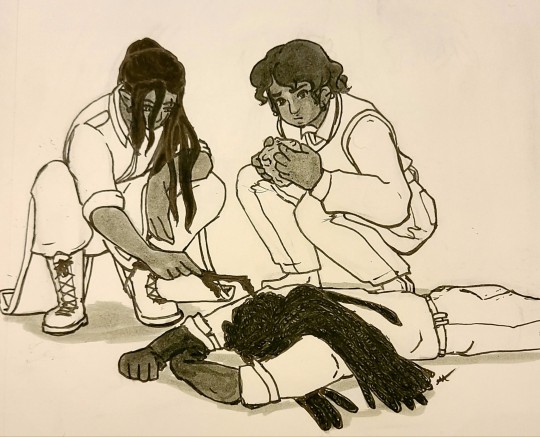
Two teenagers bully a fully grown adult man, more on this story at 6.
#the islandian chronicles#jack raider#lyris valorios#roman castello#original art#oc art#original character#original story
10 notes
·
View notes
Text
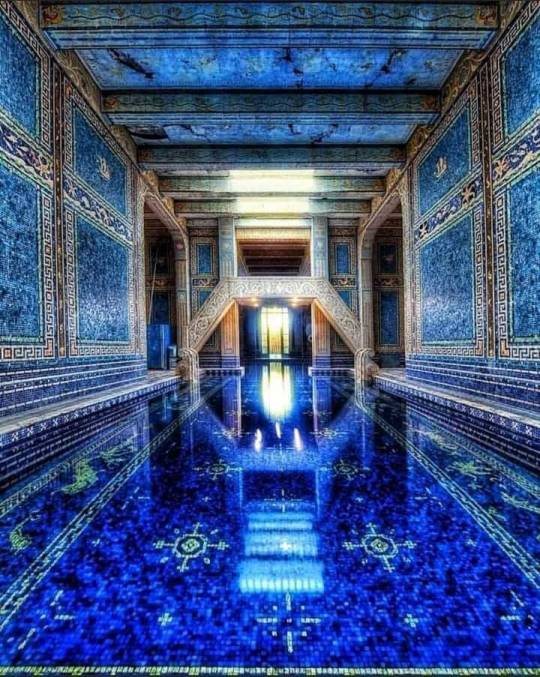
Blue Roman Pool at William Randolph Hearst's Castle in San Simeon, California, UNITED STATES
#blue roman pool#blue#azul#blu#roman pool#piscina romana#hearst castle#castello hearst#castillo hearst#william randolph hearst#san simeon#san simon#california#united states#estados unidos#north america#america del norte#america
886 notes
·
View notes
Text
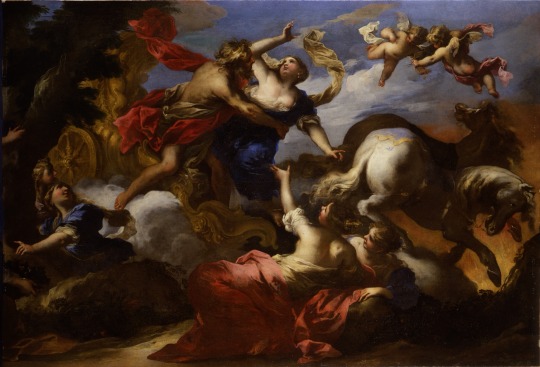
The Rape of Proserpina by Valerio Castello
#proserpina#art#valerio castello#proserpine#pluto#underworld#goddess#persephone#hades#chariot#roman mythology#greek mythology#mythology#mythological#religion#jupiter#zeus#venus#demeter#ceres#europe#european#classical antiquity#maiden#roman#greek#ancient rome#ancient greece#sicily#magna graecia
53 notes
·
View notes
Photo




Colossal Male Torso, 1st century, Roman, found in Catania in 1737
Museo Civico al Castello Ursino - Catania, Sicily
Photos by Charles Reeza
33 notes
·
View notes
Text
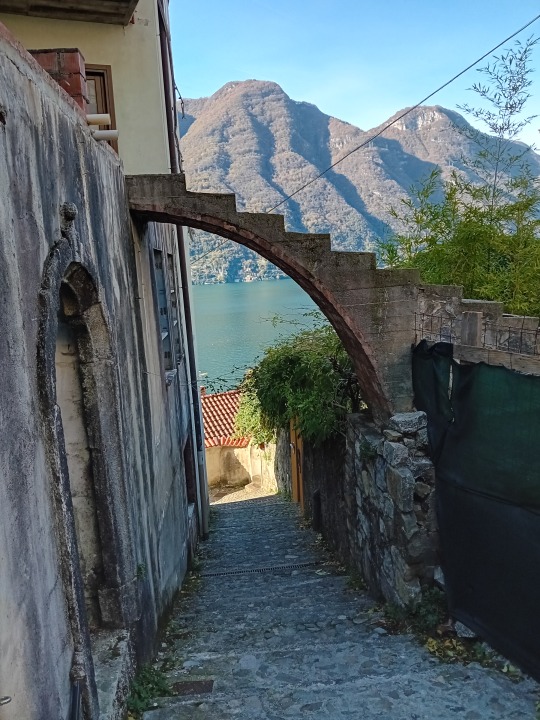
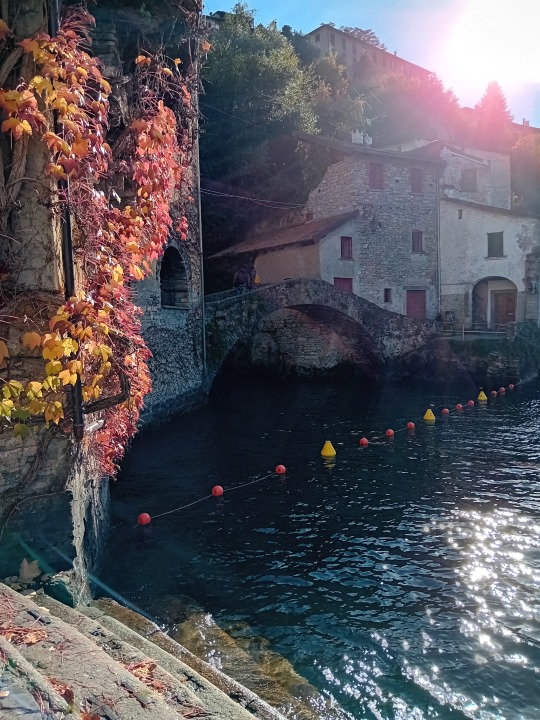


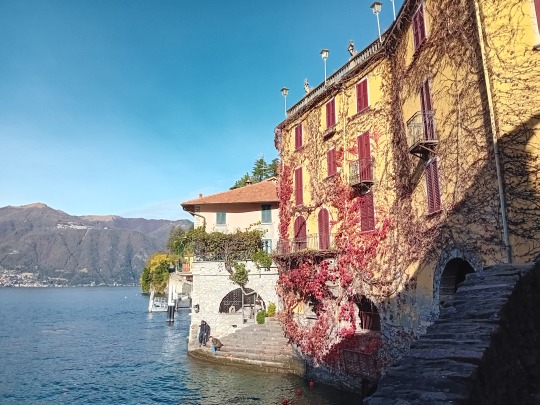

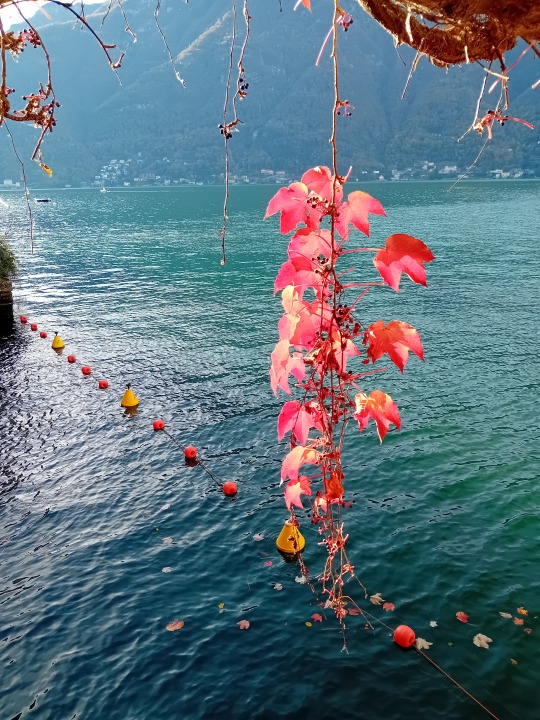
Nesso - Lake Como
The Civera Bridge connects the Coatesa hamlet to Riva del Castello, crossing the source of the Touf and Nosè torrents following the famous Nesso ravine formed by the waters that flow from Pian del Tivano: passing under it with small boats the view is truly perfect (not by chance it has often been a film set).
Of Roman origin but with a medieval shape, the bridge was designed with a perfect arch so as to be protected from floods.
19 notes
·
View notes
Text
We had a pretty good go at ticking off some major attractions today - the Castello di San Giusto, the Basilica Cattedrale di San Giusto Martire, the Santuario Santa Maria Maggiore, the Roman Teatro and the Reveltello museum, which we had been unable to access previously. No mean feat considering the walking involved, though we did make good use of the buses.
One of the first things the Austrian Empire did when it took control of Trieste in 1382 was to build a fortress from which to defend it against potential invaders from every direction, while providing suitable lodgings for its imperial captains. It certainly achieved that, and 387 years later its parapets provide these tourists with a stunning view over the city and the Gulf.
It sports an impressive drawbridge through which one can easily imagine Gandelf thundering through on his white horse with Riders of Rohan in tow, taking respite from their battle for Middle Earth against Sauron and the evil forces subservient to him.
The cathedral stands on the ancient Roman city of Tergeste and there are Roman ruins aplenty to prove it. The structure has undergone many changes over the years, including the addition of the Gothic rose window in the 14th century. Gale force winds met us as we emerged atop the Cathedral’s bell tower to get the 360 degree view we had paid for.
My personal favourite was the Sanctuary down the hill a bit, built over a couple of centuries by the Jesuits who arrived in Trieste in the early 1600s. It provided sanctuary to local people during a Cholera epidemic in the 1800s and these days it feels like a sanctuary for women. All the paintings, all the statues are of Mary. A few blokes around admittedly but mostly bit players at her feet, which is refreshing. Mum and Dad would have loved it.
What is left of the Roman ampitheatre is submerged in the trendy shopping district of Trieste. It has seen better days but kudos to the Romans and the people of Trieste, it has been around a very long time. We might have appreciated the Reveltello more if we had taken more time with it, but from the quick whip round we did, two things were clear. The original owners loved a bit of bling and the tapestry woven to a Miro design (on display at the Homage to Miro exhibition) was better than anything they had collected in their lifetime.
5 notes
·
View notes
Text
10 gennaio – Lecce and the trulli of southern Puglia
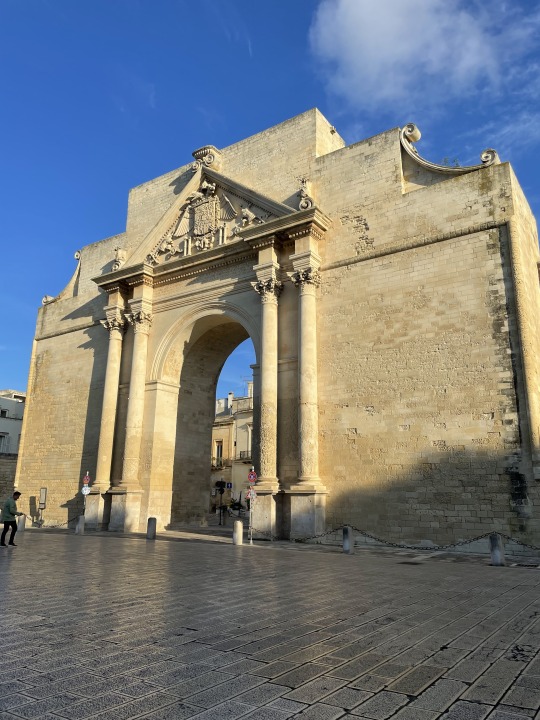
We returned back to our home in Genga yesterday afternoon, after a mammoth drive from central Puglia. I say mammoth but the distance was about 550kms which is 100kms less than the journey from Canberra to Melbourne. The drive back was relatively easy as we travelled mainly on the autostrada which meant 110 to 130km/h speed limits and a straight run through to Ancona in Le Marche.
The autostrade here are really good; there are no traffic lights or roundabouts, there are, instead, lots of tunnels where the road either goes through a mountain or under a small town, and massive bridges over ravines. I did finally try out the 130km/hr speed on a particularly good bit of road with few other cars and no trucks, but I’m much more confident keeping my speed around 125-127km/hour. Driving on the right side of the road feels quite comfortable now and I no longer feel those sharp flashes of absolute panic with approaching cars which is a relief! Mind you, I still hang onto the seat when Allan overtakes trucks or navigates curves on the autostrade at high speed. My reticence, not his driving.
Our second stop in Puglia was Lecce, a university city with ancient roots that is often described as the “Florence of the south”. The old centro storico (the historical centre of town) is filled with Baroque architecture in a style referred to as ‘barocco leccese’. While many of the buildings pre-date the Baroque period, their facades were redesigned and adapted to this style in the 17th century. Many of the buildings have been constructed using the local limestone which glows in the setting sun.
Luckily our apartment in Lecce was quite spacious so we could relax. In addition there was a supermarket close by and the centro storico was only about a 900m walk away on flat roads. Much of our time in the city was spent either relaxing or wandering through the centro storico, the latter of which we accessed through the Porta Napoli. This door to the old city was built in the 16th century in honour of the emperor, Carlos V (Charles V).
The Castello di Carlos V which is close by, was first built in the middle ages and then fortified and strengthened by Carlos in 1539. The Castello consists of two concentric trapezoidal structures surrounded by solid battlements and a moat which is now empty. Unfortunately it was closed at the time we visited.
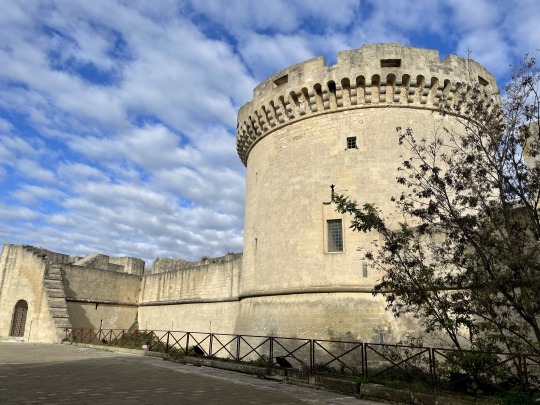

A very surprising and unexpected find for us was the Roman amphitheatre in the central piazza. This amphitheatre was built in the second century AD to hold up to 25,000 spectators. A third of the original amphitheatre has been excavated, with the remainder being buried under the surrounding buildings. We also happened upon another older ancient amphitheatre in our wanderings – another unexpected surprise.

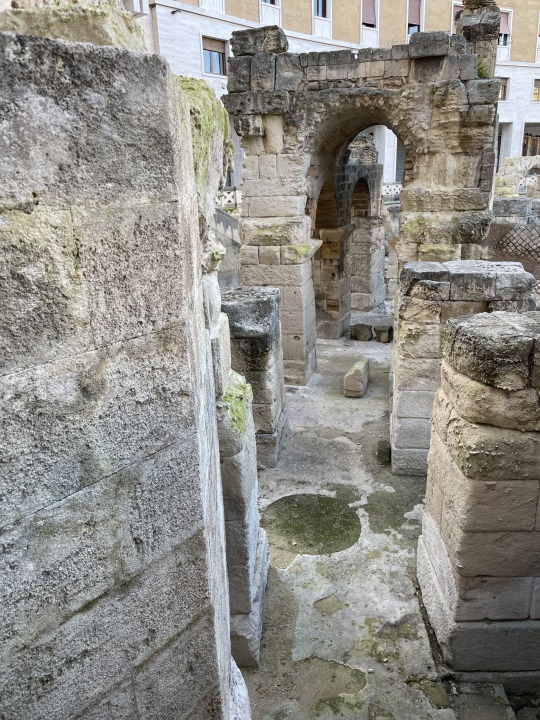

One of the amazing thing about Italy is the colocation of ancient ruins with medieval buildings and, in Lecce, very ornate Baroque facades. The exterior of the Basilica di Santa Croce which took more than 100 years to complete is an excellent example of the latter – it is very intricately and richly decorated with strange beasts, cherubs, fantastical monsters and plants. We were able to watch a short film which showed closeups of some of these forms. I was struck by a cheeky cherub trying to hold an oversized crown on its head – I’m not sure of the connection to the church but it was delightful to see. The photos we took don’t really capture this level of detail which is either stunningly beautiful or a little strange, depending on your personal perspective. I will leave you with this quote from Marchese Grimaldi who apparently said that the façade made him think he was having a nightmare.

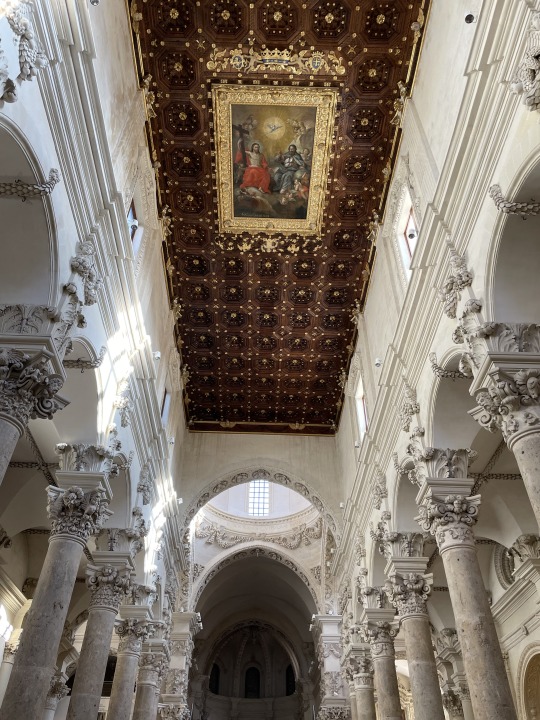
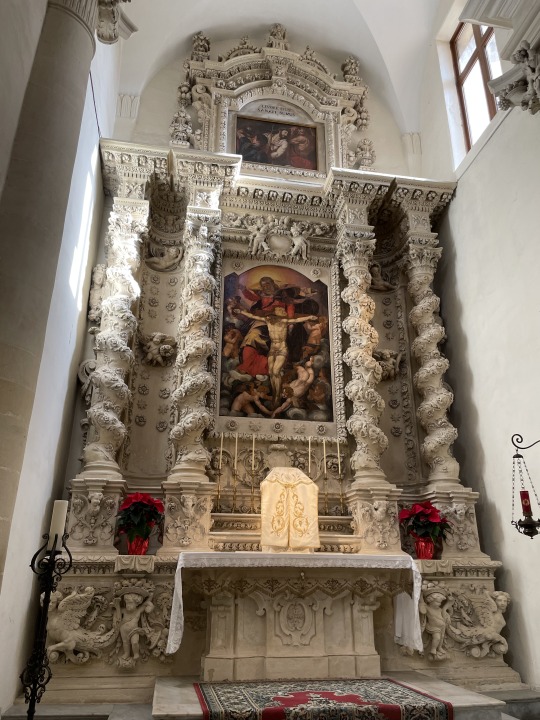
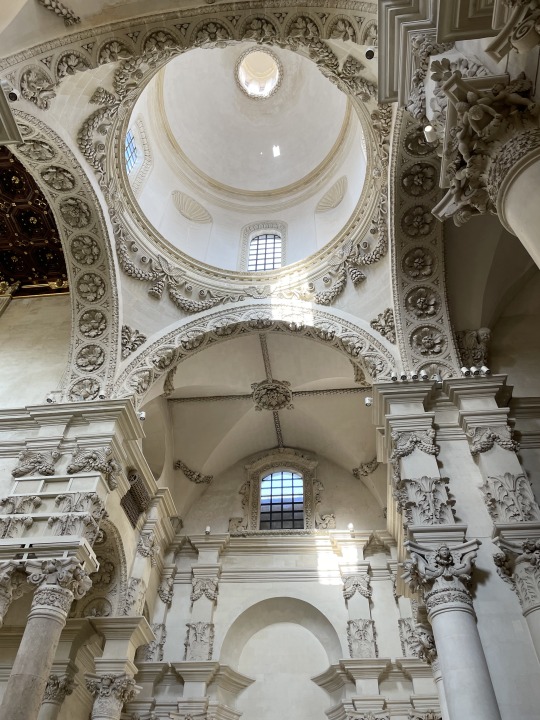
The Trulli of Puglia:
After our stay in Lecce, we headed further inland for Matera. Our intention was to stop in Alberobello for lunch and to see the famous trulli, the traditional, dry-stone huts which are specific to the Itria valley in southern Puglia. The trulli (or trullo, singular) are drywall dwellings constructed without the use of mortar and using an ancient building technique. The dwellings are built using roughly worked limestone boulders, and they feature pyramidal, domed or conical roofs built up of corbelled limestone slabs. While the roof is conical, the buildings themselves are generally rectangular in form. Many of the structures in Alberobello are whitewashed, in contrast to those we saw in the more rural areas. The walls of the trulli are built directly onto limestone bedrock and they comprise a double skin which is filled with rubble. The inner skin is domed and comprised of wedge-shaped stone capped by a closing stone, while the outer layer is watertight. Some of the trulli date back to mid-14th century.
We passed many of these buildings on our way to Alberobello, including a number of quite opulent or expensive looking dwellings on a mountain overlooking the Itria valley. These houses were either built around one of several pre-existing trulli or the ancient trulli building method was incorporated into their design. Unfortunately the very narrow roads meant we couldn’t safely stop to look more closely or take photos. Nor could we safely stop and look at the many trulli scattered across the valley – not only were the roads narrow, they were all lined with rock walls which looked quite ancient. The whole area looked surreal, almost like we’d suddenly driven into another country.
Now we had chosen to visit Alberobello because it has the highest concentration of trulli, with more than 1500 structures located in several town quarters. Thousands of other tourists also had the same idea; the place was full and we drove round and round trying to find a carpark. At one point, Allan turned into a narrow street thinking it would get us off the main streets and to a safe place to leave the car. But no, it was a one way, very narrow street right in the heart of trulli territory. Talk about stressful! I’m not sure what would have been worse if we’d hit one of the houses going through, the damage to the car or the damage to a UNESCO listed dwelling that thousands of people come to see each year and which is part of Italy’s cultural heritage ….
I got out and offered directions to Allan to make sure we didn’t hit anything, and to apologise to the locals who came out to see what was happening. Allan navigated and very, very slowly drove the car out without any major incidents or accidents (except that poor plastic garbage bin). After that, we just drove out of the town and kept going on to Matera. Thankfully we’d booked a room in a hotel in Matera that had very accessible parking. Having a car in Italy is terrific for getting to a range of different places but you really need to do your research first and to work out where you can park the damn thing when you get to your destination. (And most Italian tourist guides, Google and Apple Maps all seem to ignore parking.)
I don’t have any photos of Alberobello or of the trulli so here is a photo of a street which is wider than the one we navigated , and a link to other photos of the trulli:
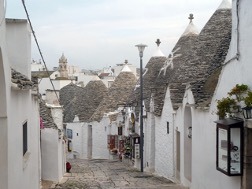
3 notes
·
View notes
Text
Saint of the Day – 18 January – Blessed Beatrix d'Este the Younger (c 1230-1262)
Saint of the Day – 18 January – Blessed Beatrix d’Este the Younger (c 1230-1262) Benedictine Nun, founded a Convent. Born in c 1230 at Castello Estense, Ferrara and died on 18 January 1262 of natural causes. Beatrix was Beatified in 1774 by Pope Clement XIV. Her memorial date was decreed by Pope Pius VI for today. Additional Memorial – 19 January. Also known as – Beatrice.
The Roman Martyrology…
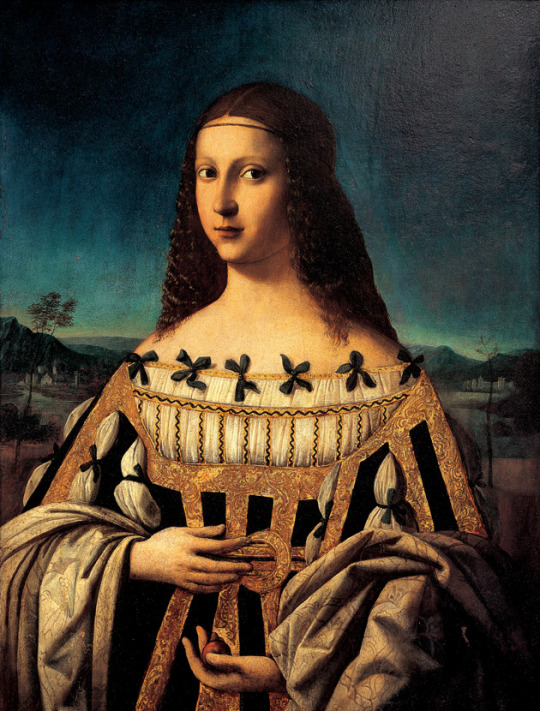
View On WordPress
2 notes
·
View notes
Text

The Holy Roman Empire Gernstein Castle, Italy 🇮🇹 😍 Gernstein Castle – South Tyrol, Italy – Built 12th c. by Heinrich Garre, Ministerial of Bressanone – Passed to the Counts of Heydorf 1550 – Abandoned late 16th c. – Restored by Prussian Lieutenant General Friedrich von Gerstein-Hohenstein 1880 – Currently a private residence not open to the public.
#fortezza #castlemypassion #castlesofeurope #borghitalia #italia #italy #italygram #italytravel #italytrip #italy🇮🇹❤️ #italy_vacations #italyiloveyou #madeinitaly #italytourism #castlesoftheworld #castlesofeurope #castlesofinstagram #castles_oftheworld #europeancastles #castles #bestcastles #castles🏰 #höhenburg #castlesofitaly #schloß #chateau #chateaux #kasteel #HolyRomanEmpire 👉👉👉👉📸 @steiger_photography — em Castello di Gernstein
3 notes
·
View notes
Text
The Best Day Trips from Civitavecchia Port: Unforgettable Adventures a Short Distance Away with RomeCabs
Discover Unforgettable Day Trips from Civitavecchia Port with RomeCabs
Welcome to Civitavecchia Port, your gateway to unforgettable day trips and extraordinary adventures. Nestled along the picturesque Italian coastline, Civitavecchia is the perfect starting point for cruisers eager to explore the captivating treasures that lie just a short distance away. Today, we invite you to embark on the best day trips from Civitavecchia Port with RomeCabs.
Our private tours from Rome’s seaport include deluxe vehicles, complete with pickup and drop-off directly by the ship inside the port, ensuring a seamless and luxurious experience throughout your journey.
The Eternal City's Timeless Splendor: Rome Tours from Civitavecchia
No shore excursion from Civitavecchia is complete without exploring the eternal city of Rome. Immerse yourself in ancient history as you admire the Colosseum, walk in the footsteps of emperors at the Pantheon, and marvel at the grandeur of St. Peter’s Basilica. Toss a coin into the Trevi Fountain, and soak up the lively atmosphere of Rome’s bustling streets and charming piazzas like Piazza Navona, Piazza della Rotonda, and the Spanish Steps. Indulge in the mouthwatering flavors of Italian cuisine and refreshing creamy gelato.
Exploring Rome’s Hidden Gems
With our Rome tours from Civitavecchia, you’ll have the opportunity to experience iconic landmarks and explore Rome’s hidden gems at your own pace, ensuring an unforgettable journey through this vibrant city.
Enchanting Medieval Towns: Bracciano and Tuscania
There’s more to see from Civitavecchia than just Rome. For a glimpse into Italy’s medieval past, venture to the captivating towns of Bracciano and Tuscania.
Bracciano
Resting on the shores of Lake Bracciano, this town exudes timeless charm with its medieval architecture and picturesque surroundings. The highlight is undoubtedly the magnificent Castello Orsini-Odescalchi, a 15th-century fortress that stands as one of the best-preserved Renaissance castles in Italy. Explore its grand halls, elegant rooms, and panoramic terraces, and be transported back in time. Wander through Bracciano’s historic center, a delightful maze of narrow alleys, cobblestone streets, and charming squares.
Tuscania
Located in the Lazio region, Tuscania is another enchanting medieval town rich in history. The Church of San Pietro, with its intricate carvings and beautiful frescoes, and the Church of Santa Maria Maggiore, showcasing Romanesque and Gothic styles, are architectural gems. Stroll through Tuscania’s narrow streets and enjoy the local shops, cafes, and trattorias.
Historical Wonders: Ostia Antica and Etruscan Necropolis Cerveteri
For history enthusiasts, a day trip to Ostia Antica and Cerveteri from Civitavecchia offers a captivating journey through ancient Roman and Etruscan civilizations.
Ostia Antica
Just a short distance from Rome, the ancient city of Ostia Antica stands as a testament to the grandeur of the Roman Empire. Wander through the vast archaeological site, and explore well-preserved structures like the amphitheater, which hosted gladiatorial contests and theatrical performances. Discover the daily lives of its inhabitants through the remains of stunning mosaics and frescoes.
Etruscan Necropolis in Cerveteri
Cerveteri’s Banditaccia Etruscan Necropolis, a UNESCO World Heritage Site, is a vast burial site that showcases the mysterious Etruscan civilization. The Tomb of the Reliefs, with its intricate carvings, is a highlight. Explore the distinct architectural styles and burial practices of the Etruscans and gain insight into their customs, beliefs, and artistic achievements.
Ancient Splendors: Tarquinia’s Etruscan Treasures
Tarquinia is renowned for its Etruscan heritage and boasts a wealth of archaeological treasures and a charming medieval historical center.
Monterozzi Necropolis
The Monterozzi Necropolis in Tarquinia, recognized as a UNESCO World Heritage Site, features impressive burial chambers like the Tomb of the Leopards, adorned with stunning frescoes. Visit the Etruscan Museum to see an extensive collection of artifacts that provide a deeper understanding of Etruscan culture.
Tarquinia’s Medieval Historical Center
Wander through Tarquinia’s historical center, with its narrow, winding streets and well-preserved medieval architecture. The Palazzo Vitelleschi, housing the National Museum of Tarquinia, showcases remarkable medieval and Renaissance art. Don’t miss the town’s imposing medieval towers, offering breathtaking panoramic views of the surrounding landscape.
With RomeCabs, your adventures from Civitavecchia Port promise to be seamless, luxurious, and unforgettable. From the eternal city of Rome to the enchanting medieval towns and ancient ruins, let us take you on a journey through Italy’s rich history and captivating beauty.
Grazie e buon viaggio from RomeCabs :)
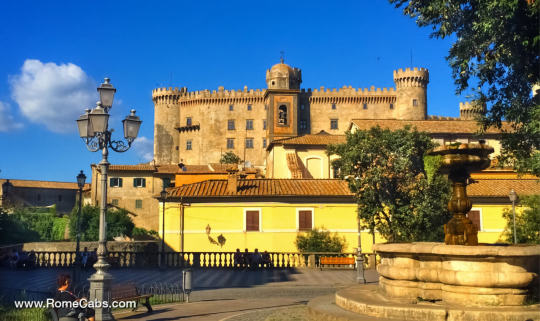
#romecabs#rome cabs#rome#italy#rome tours#romecabs tours#romecabs tour#Civitavecchia Shore Excursions#Shore Excursions from Civitavecchia#Rome Cruise Tours#Rome cruise port tours#Tours from Civitavecchia to Rome#Best Shore Excursions from Civitavecchia
0 notes
Text
A Sardinian castle with many names
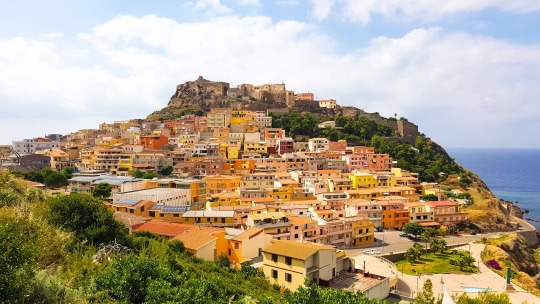
The present town of Castelsardo is identified with the Roman Tibula, but the fact is more a myth than a certainty. Its castle certainly became an impregnable fortress during the Middle Ages thanks to its walls and its seventeen towers.
Initially, the castle of Castelsardo was called Castelgenovese when it was erected by Genoese Doria, probably around 1102, although other sources place its construction a century later. The old town grew up around it. One of the most outstanding buildings from the same period is the Palazzo della Loggia, the seat of the town council since 1111.
A possible link with Catalonia lies in the creation of the bishopric of Ampurias, which recreates the name of the county of Empúries and the bishopric established there between the 6th and 7th centuries. It is for this reason that one of the names it received in the Middle Ages was Castell d'Empúries.
The Sardinian diocese was created in the 11th century and maintained its ecclesiastical independence until 1506, when it was united with that of Civita to create a new bishopric, renamed Ampurias and Tempio in 1839 and Tempio-Ampurias in 1986.
At the beginning of the 16th century, under the domination of the Crown of Aragon, Castelsardo was called Castello Aragonese and in 1586 was built the cathedral of Sant’Antonio Abate, now the co-cathedral of the diocese. At that time, its bastions were reinforced to face the attacks of the Turkish Empire.
Sardinia was born as a kingdom linked to the Crown of Aragon in 1297. With the death of Ferdinand the Catholic in 1516, it passed into the hands of the Spanish Monarchy, first under the Habsburg dynasty and then the Bourbon dynasty, until it was formally incorporated into the Austrian Empire in 1714.
In 1720, the Austrian emperor exchanged Sicily, which was closer to his mainland territories, for Sardinia, where the Savoy dynasty was established. It was around 1767 that the town took its present name by the will of King Carlo Emanuele III.
1 note
·
View note
Text
Thalia: So why aren't we using portals to bypass land travel?
Jack: Well, aside from being incredibly draining on the caster, they're wicked dangerous and take a lot of skill to successfully form.
Lyris: Not to mention somebody -- ROMAN -- has a magic tracking chip that alerts Keres when he uses fully magic travel.
Roman: It's a ceremonial rite tattoo, and I didn't have a choice!
Lyris: Well excuuuuse me, princess; but it's still a pain in the ass.
Roman: First of all: rude. Second, Alex has it too.
Alex: I what now?
Thalia: Something tells me he didn't know that, Sunshine.
Roman: How did you not know about that?
Alex: How did you not tell me sooner?!
Roman: Touché.
#the islandian chronicles#jack raider#side chats#lyris valorios#thalia vandalyn#roman castello#alexander akalon
5 notes
·
View notes
Text
MiC, via al Piano Strategico “Grandi Progetti Beni Culturali”

MiC, via al Piano Strategico “Grandi Progetti Beni Culturali”
Il Ministro della Cultura, Gennaro Sangiuliano, ha firmato cinque decreti riguardanti il Piano Strategico “Grandi Progetti Beni Culturali”, che si articola in “Riprogrammazione delle risorse finanziarie”, “Programmazione risorse residue annualità 2020”, “Programmazione risorse residue annualità 2023”, “Programmazione ulteriori risorse annualità 2023” e “Programmazione risorse annualità 2024”.
“I Grandi Progetti Beni Culturali sono una tappa fondamentale del nostro lavoro, siamo riusciti ad intervenire su un insieme molto articolato di beni del nostro splendido patrimonio. Dopo una fitta interlocuzione con i vari territori sono stati scelti diversi siti in quasi tutte le regioni Italiane: dal teatro Bellini di Catania al Santuario di Oropa a Biella, dal museo del libro a Napoli, alla foiba di Basovizza, dal parco archeologico di San Casciano alla villa romana di Positano. Tanto per citare alcuni degli interventi. Un’azione che permette di concretizzare l’idea di una tutela e valorizzazione diffusa su tutto il territorio della Nazione. L’Italia deve essere orgogliosa del suo patrimonio, un unicum globale per qualità e quantità, dobbiamo prendercene cura e farne un’occasione di sviluppo socio economico”, ha dichiarato il Ministro Sangiuliano.
Di seguito il dettaglio degli interventi previsti dai singoli decreti, divisi per regione (tra parentesi, il totale finanziato).
Abruzzo
L’Aquila - completamento del Teatro Comunale (5.000.000 euro);
Pescara - realizzazione del Parco Archeologico di Rampigna (2.000.000 euro);
Basilicata
Lavello (Potenza) - restauro architettonico del Palazzo Ducale di Lavello e rifunzionalizzazione degli spazi museali (2.500.000 euro);
Calabria
Reggio Calabria - lavori di scavo archeologico e allestimento multimediale nella Cattedrale di Gerace (500.000 euro);
Reggio Calabria - restauro della Basilica Cattedrale (1.500.000 euro);
Vibo Valentia - allestimento, rifunzionalizzazione e restauro del Museo Archeologico Nazionale Vito Capialbi (1.500.000 euro);
Campania
Napoli - acquisizione del complesso immobiliare denominato Monte di Pietà di Napoli e dei beni mobili tutelati allocati nel complesso medesimo per l’importo complessivo massimo di 7.900.000 euro;
Napoli - recupero Complesso Monte di Pietà (10.000.000 euro);
Napoli - Napoli Archeolab Stella Polare, rifunzionalizzazione del deposito dismesso ANM "Stella Polare" e allestimento Archeolab (4.000.000 euro);
Napoli - Museo Nazionale del Libro e della Lettura (4.000.000 euro);
Caivano (Napoli) - intervento per la riqualificazione e realizzazione del Nuovo Polo della Cultura per l’importo complessivo di 12.000.000 euro;
Benevento - adeguamento Museo del Sannio (2.000.000 euro);
Forio d'Ischia (Napoli) - progetto di rifunzionalizzazione della Villa "La Colombaia" di Luchino Visconti (1.000.000 euro);
Sant'Agata de’ Goti (Benevento) - recupero del Compendio Ecclesiale del Centro storico di Sant'Agata de' Goti (4.000.000 euro);
Positano (SA) - nuove prospettive di scavo e di valorizzazione della Villa Romana di Positano e del Museo Archeologico (2.000.000 euro)
Emilia Romagna
Ferrara - acquisto del complesso immobiliare costituito dagli edifici dell’ex filiale della Banca d’Italia ubicati in Ferrara, in piazza Tasso e in via Borgo dei Leoni per l’importo complessivo massimo di 5.016.000 euro.
Ferrara - Restauro e consolidamento del Castello Estense (3.000.000 euro);
Bologna - Villa Aldini: allestimento spazio espositivo per il nuovo museo sulla comunicazione nel segno di Guglielmo Marconi (4.000.000 euro);
Modena - Gallerie Estensi: riqualificazione, manutenzione straordinaria e valorizzazione sedi di Modena e Sassuolo (3.000.000 euro);
Modena - complesso monumentale Abbazia di S. Pietro di Modena (3.000.000 euro);
Colorno (Parma) - restauro della Reggia di Colorno, (5.000.000 euro);
Friuli Venezia Giulia
Romans d’Isonzo (Gorizia) - Completamento dell’allestimento espositivo museale del Civico Museo Archeologico di Romans (193.021 euro);
Aquileia (Udine) - Museo archeologico nazionale di Aquileia - II lotto (2.000.000 euro)
Trieste - Monumento Nazionale “Foiba di Basovizza” – Centro di documentazione (1.600.000 euro)
Lazio
Roma - Galleria nazionale d’arte moderna e contemporanea di Roma: adeguamento strutturale ed impiantistico e allestimento ala Cosenza (8.400.000 euro);
Roma - rifunzionalizzazione e restauro architettonico interno ed esterno dell'ICCROM - sede via S. Michele (8.000.000 euro);
Subiaco (Roma) - messa in sicurezza, restauro e rifunzionalizzazione della Rocca Abbaziale di Subiaco e delle strutture murarie annesse (3.000.000 euro);
Roma - Quirinale - Teatro dei Dioscuri - Intervento per il risanamento conservativo, per il superamento delle barriere architettoniche e adeguamento funzionale ed impiantistico (1.000.000 euro);
Roma - Complesso monumentale costituito da Palazzo Poli e Palazzo della Calcografia (4.000.000 euro);
Rieti - Museo civico di Rieti - Nuova ubicazione del Museo Nazionale dei Sabini (5.000.000 euro);
Segni (Roma) - Valorizzazione e potenziamento della fruibilità e dell’accessibilità del Parco Archeologico urbano "Segni Città-Museo" (2.808.261,99 euro);
Soriano nel Cimino (Viterbo) - Palazzo Chigi Albani e Fonte Papacqua (5.000.000 euro);
Liguria
Genova - Completamento della Casa dei Cantautori (3.000.000 euro);
Genova - sede storica della Biblioteca Universitaria di Genova già Chiesa dei SS Girolamo e Francesco - Completamento (2.500.000 euro);
Lombardia
Milano - Anfiteatro di Milano - PAN Parco Amphiteatrum Naturae (1.600.000 euro);
Milano - Caserma sede della Compagnia Carabinieri Milano Duomo (2.852.000 euro);
Castelseprio (Varese) - Siti UNESCO della Provincia di Varese: Sacro Monte di Varese - Castelseprio (5.000.000 euro);
Milano - Sinagoga - Museo della Cultura Ebraica di Milano (3.000.000 euro);
Tradate (Varese) - Completamento del Polo Culturale – Museo della motocicletta Frera 1905 (2.500.000 euro);
Marche
Potenza Picena (Macerata) - Valorizzazione del Complesso di Villa Buonaccorsi (2.000.000 euro);
Staffolo (Ancona) - Progetto di restauro e di riqualificazione e nuove funzioni di Villa Verdenelli a Staffolo (2.000.000 euro);
Ascoli Piceno - Recupero della chiesa di Sant'Angelo Magno (2.000.000 euro);
Molise
Agnone (Isernia) - Polo culturale della città di Agnone (2.700.000 euro);
Campomarino (Campobasso) - Realizzazione del Museo archeologico di Campomarino (1.778.000 euro);
Piemonte
Torino - Distretto centrale dei Musei di Torino: Reale Cavallerizza (5.844.633 euro);
Casale Monferrato (Alessandria) - Restauro Aereo Ansaldo A1 “Balilla” appartenuto al pilota di Gabriele D’Annunzio Natale Palli (794.512 euro);
Oropa (Biella) - Restauro del Santuario di Oropa (7.000.000 euro);
Torino - Nuovo Museo del Cinema (3.000.000 euro);
Puglia
Lecce - Restauro e valorizzazione del Convento degli Olivetani (5.000.000 euro);
Otranto (Lecce) - Riqualificazione del sistema degli spazi pubblici del centro storico di Otranto: restauro del Palazzo Melorio Torre Duchesca e camminamento di Ronda (2.500.000 euro);
Ceglie Messapica (Brindisi) - Progetto di adeguamento funzionale del Castello Ducale di Ceglie Messapica (2.500.000 euro);
Sardegna
Le Domus de Janas. Arte, architettura e paesaggio nella preistoria della Sardegna. Progetto di scavo, conservazione, restauro e valorizzazione dei siti inseriti nella tentative list UNESCO (5.000.000 euro);
Architetture di pietra nel cuore della civiltà nuragica: Nuraghe S’Urachi, San Vero Milis (OR), Nuraghe Losa, Abbasanta (OR); Nuraghe Barru, Guamaggiore(SU); Nuraghe Cuccuradda, Mogoro (OR) (1.000.000 euro)
Sicilia
Avola (Siracusa) - Progetto di riqualificazione ex cinema teatro Cappello (1.083.425,71 euro);
Catania - Teatro “Massimo Bellini”: restauro della facciata (3.300.000 euro);
Toscana
Firenze - Gallerie degli Uffizi: rifunzionalizzazione del Museo degli Argenti - Tesoro dei Granduchi per la valorizzazione di Palazzo Pitti al fine di incrementare l’offerta museale (3.600.000 euro);
Firenze - Gallerie degli Uffizi: restauro integrale dei sistemi monumentali del Nettuno e dell'isola nell'ambito del Masterplan Boboli – Completamento (1.200.000 euro);
Firenze - Gallerie degli Uffizi: restauro delle facciate del Cortile dell’Ammannati – Palazzo Pitti (1.200.000 euro);
Firenze - Gallerie degli Uffizi: rifunzionalizzazione della sicurezza degli ingressi sia architettonica che museale del percorso di accesso alle Gallerie (4.200.000 euro);
Firenze - Gallerie degli Uffizi: restauro e ripristino dell’ultimo piano dello Scalone monumentale di accesso alle Gallerie (1.000.000 euro);
Firenze - Museo Nazionale della Lingua italiana – MUNDI (800.000 euro)
Pistoia - Restauro conservativo del complesso immobiliare denominato Teatro “Alessandro Manzoni” di Pistoia (5.000.000 euro);
Massa - Palazzo Ducale - Messa in sicurezza gronde e restauro facciate (5.065.000 euro);
Pienza (Siena) - Torre del Cassero di Monticchiello (1.400.248,45 euro);
San Casciano dei Bagni (Siena) - San Casciano dei Bagni - Interventi funzionali alla realizzazione del parco archeologico termale presso il santuario etrusco e romano di Bagno Grande a San Casciano dei Bagni (4.500.000 euro);
Piombino (Livorno) - Nuovo polo culturale di Piombino (3.200.000 euro);
Pietrasanta (Lucca) - Museo Mitoraj - Completamento Lotto II – Ampliamento Museo Mitoraj (500.000 euro);
Trentino Alto Adige
Cavalese (TN) - Lavori di ricostruzione del Teatro Comunale di Cavalese (1.500.000 euro);
Umbria
Perugia - Riallestimento completo degli spazi del Museo Archeologico Nazionale dell’Umbria di Perugia (2.000.000 euro);
Terni - Area archeologica di Carsulae: valorizzazione e nuova fruizione dei resti del foro e della basilica (2.000.000 euro);
Veneto
Belluno - Teatro Comunale "Dino Buzzati". Messa a norma e rinnovamento (772.000 euro);
Venezia - Museo Ebraico di Venezia MEV - Completamento (2.000.000 euro);
Restauro e messa in sicurezza dei Sacrari di Cima Grappa, Tempio ossario di Bassano del Grappa, Asiago, Nervesa della Battaglia (5.000.000 euro)....
#notizie #news #breakingnews #cronaca #politica #eventi #sport #moda
Read the full article
0 notes
Photo
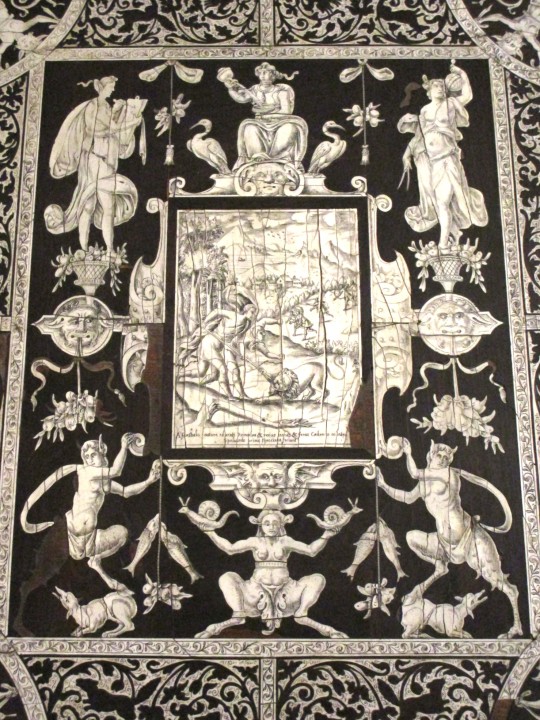
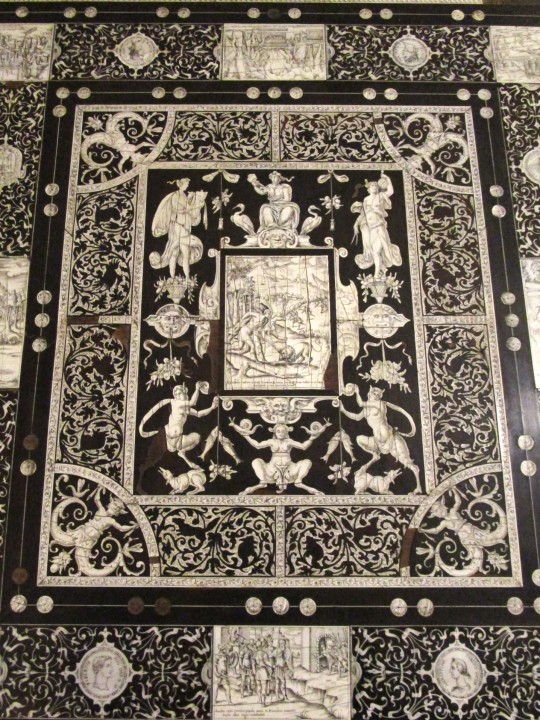

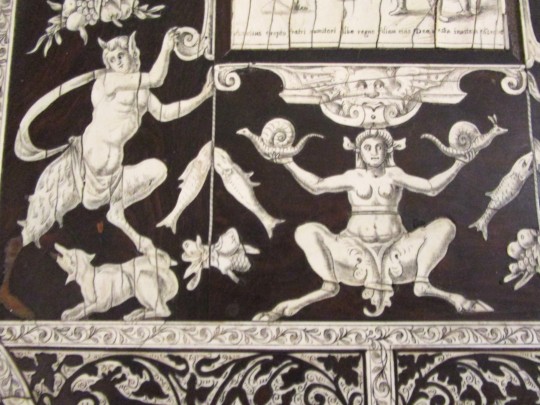
Sixteenth century Certosina table in ebony and ivory with engraved scenes depicting episodes of Roman history with captions from the historian Titus Livius
Museo Civico al Castello Ursino - Catania, Sicily
Photos by Charles Reeza
#Renaissance art#inlaid ivory#antique furniture#intricate design#grotesques#snails#fish#dogs#birds#fruit#satyrs
15 notes
·
View notes
Text
21 mar 2024 17:48
“IL POTERE? TUTTI CREDONO CHE SIA INCARNATO DA CHI COMPARE IN TV E SUI GIORNALI. SBAGLIATO. È INVISIBILE” – DAGO AFFIDA A “OGGI” LA SUA LEZIONE SU CHI COMANDA: “IL POTERE STA NEGLI APPARATI, IN QUELLO CHE VIENE DEFINITO “DEEP STATE”, LO STATO PROFONDO: I POLITICI PASSANO, LORO RESTANO – A ROMA DA SOLO NON CONTI NULLA, CONTI SOLO SE RIMANI UNITO AD ALTRI UGUALI A TE - NELLA CAPITALE SI CONTANO PIÙ DI 30 CIRCOLI: NAUTICI, GOLFISTICI, VENATORI, SCACCHISTICI, TENNISTICI, IPPICI. OH, SAREMO MICA DIVENTATI TUTTI CANOTTIERI? PER ESSERE AMMESSI SERVE L’AFFIDABILITÀ - I PARVENU ENTRANO NELLA STANZA DEI BOTTONI E CREDONO DI POTER FARE TUTTO QUELLO CHE VOGLIONO - NON AVETE IDEA DI CHE COSA MI HANNO FATTO IN 24 ANNI QUELLI CHE COMANDANO: INTIMIDAZIONI, QUERELE, LA GUARDIA DI FINANZA CHE VIENE A SIGILLARMI LA CASA, LA PUBBLICITÀ CHE SPARISCE…”
Stefano Lorenzetto per “OGGI”
Il Mercury, cinema a luci rosse, si trovava a 700 metri dalla basilica di San Pietro, in via Porta di Castello 44. «Proprietario dei muri era il Vaticano. Sul finire degli anni Ottanta, con l’arrivo delle videocassette, andò in crisi. Fu trasformato nel Muccassassina, il locale notturno più trasgressivo della Capitale: frocioni, drag queen, dark room, Cicciolina e la ventenne Vladimir Luxuria a fare da buttadentro», racconta Roberto D’Agostino. Lei che ne sa del patrimonio immobiliare ecclesiastico? «Ma scusi, se poi i preti lì ci hanno messo l’ufficio stampa del Giubileo! E oggi ospita il centro conferenze della Lumsa, la Libera Università Maria Santissima Assunta».
Mai fare domande di cui si conosce già la risposta: il fondatore di Dagospia sa tutto. La Città Eterna per lui non ha segreti, se non altro perché la osserva dal terrazzo di un doppio attico affacciato a 360 gradi su quella che ha sempre chiamato «Roma godona» e ora è diventata Roma Santa e Dannata, titolo (con rispettose iniziali maiuscole) del suo docufilm girato insieme a Marco Giusti, disponibile su RaiPlay. Tant’è che è stato chiamato a parlarne all’Istituto italiano di cultura a Londra, su invito del direttore Francesco Bongarrà, in occasione della mostra Legion life in the Roman army al British Museum, aperta fino al 23 giugno.
Più dannata che santa, si direbbe dal docufilm.
«Mi ha sempre stupito che il buon Dio si sia inventato una città santa mettendoci accanto il diavolo. Una Gerusalemme, il Vaticano, che ha intorno una Babele, Roma. Già nel 1834 per il poeta Giuseppe Gioachino Belli, impiegato pontificio, era “caput mundi” ma anche “la chiavica der monno”».
Capitale e fognatura del globo.
«Non che Milano sia la capitale morale. È che qui non ci siamo mai fatti intortare da filosofie, dogmi, ideologie. Il cattolicesimo è l’unica religione inclusiva: accoglie tutti e tutti assolve. Sa che Bene e Male sono due facce della stessa medaglia e quella medaglia siamo noi. Nessuno può scagliare il primo sampietrino. Negli anni Sessanta conobbi lo sceneggiatore Gore Vidal, snobissimo e antipaticissimo. Gli chiesi: com’è che voi gay venite tutti a Roma, non avete i festini a Hollywood? Mi rispose: “Perché qui si scopa”».
Molto esplicito.
«Al Palatino hanno rinvenuto un’epigrafe in greco che recita: “Ho imparato che a Roma la via diritta è un labirinto”. Nel quartiere San Lorenzo, dove abitavo, vidi Pier Paolo Pasolini nella trattoria Pommidoro che flirtava con un quindicenne: era Ninetto Davoli. Oggi chiamerebbero i carabinieri».
A Roma c’è il potere. Lei è un uomo di potere?
«Iooo? Da solo non conti nulla. Il simbolo di Roma antica è il fascio, un mazzo di verghe con la scure. L’insegna del comando. Abramo Lincoln ci appoggia sopra le mani nel monumento di Washington. Conti solo se rimani unito ad altri uguali a te».
Traduca il concetto.
«La Dc erano dieci partiti legati come un fascio e ha governato per 40 anni. Nella Capitale si contano più di 30 circoli: nautici, golfistici, venatori, scacchistici, tennistici, ippici. Oh, saremo mica diventati tutti canottieri? Per essere ammessi in quei club esclusivi devi esibire un’unica patente: l’affidabilità. Nel 1977, quando mi proposi a Rai 2 per Odeon, il rotocalco televisivo, fui portato al cospetto di un alto dirigente di viale Mazzini, il quale chiese al curatore Brando Giordani: “È affidabile?”. “Sì”, rispose il giornalista. “Bene, allora buon lavoro, arrivederci”, concluse quello. Nient’altro».
Accipicchia, un vero talent scout.
«Più che circoli ristretti, diciamo che sono logge. Devi conoscerne le regole e rispettarle».
E quali sarebbero le regole del potere?
«Mai associarlo al sesso, mai ai soldi, mai al tradimento. Invece i parvenu scesi dal Nord entrano nella stanza dei bottoni e, ubriachi di hybris, credono di poter fare tutto quello che vogliono. Bettino Craxi flirtò con Moana Pozzi. Silvio Berlusconi organizzò i festini a Palazzo Grazioli. Matteo Renzi arrivò a Palazzo Chigi e nominò capo dipartimento degli Affari giuridici e legislativi Antonella Manzione, che era stata comandante dei vigili urbani di Firenze con lui sindaco. Tutt’e tre spazzati via».
La prima volta in cui vide il potere da vicino?
«Fu quando Francesco Cossiga si rivolse a me perché veniva ritenuto un folle e quindi nessun organo di stampa gli pubblicava i comunicati, neppure l’Adnkronos del suo amico Pippo Marra. Una mattina sono nel suo studio di via Quirino Visconti. Da Washington chiamano Kossiga, l’amerikano con la kappa: gli Usa hanno bisogno di far decollare dall’Italia i loro cacciabombardieri per la guerra nel Kosovo.
L’ex presidente telefona al premier Romano Prodi, il quale da buon cristiano gli obietta che lui non uccide e nega il permesso. Allora Cossiga cerca Massimo D’Alema, che pur di prendere il posto di Prodi avrebbe sganciato una bomba atomica. “Vuoi diventare presidente del Consiglio?”, gli chiede. Conclusione: D’Alema è il primo comunista a diventare capo del governo italiano e gli americani possono far partire gli aerei dal Belpaese».
Come mai, nonostante le sue delazioni, la lasciano libero di campare? Il potere è tollerante?
«Scherza? Lei non ha idea di che cosa mi hanno fatto in 24 anni quelli che comandano: intimidazioni, querele, la Guardia di finanza che viene a sigillarmi la casa, la pubblicità che sparisce. Io non ho alle spalle John Elkann o Carlo De Benedetti».
Provi a identificarlo, questo maledetto potere.
«Tutti credono che sia incarnato da chi compare in tv e sui giornali. Sbagliato. Il potere è invisibile. Sta sotto, negli apparati, in quello che viene definito “deep State”, lo Stato profondo: Consulta, Corte dei conti, Ragioneria generale, servizi segreti, funzionari dei ministeri. Si fanno chiamare “servitori dello Stato”, non sono né di destra né di sinistra. I politici passano, loro restano. Rimasero persino dopo la caduta di Benito Mussolini».
Ma lei li tiene tutti sotto tiro. Come ci riesce?
«Faccio e ricevo telefonate. Chi si rivolge a me sa che non tradirò mai la sua fiducia. E uso un algoritmo inglese, Kilkaya. Mi svela che cosa piace ai lettori. Costa meno di un dipendente, 1.500 euro al mese: vede in tempo reale su che cosa cliccano».
Si maligna che il suo potere le derivi da un solido legame con i servizi segreti.
«Assurdo. Una delle sorprese della mia vita fu incontrarli. M’aspettavo qualcosa alla John le Carré o alla Graham Greene, agenti 007 divenuti romanzieri, invece mi venne da ridere. Fu tutt’altra cosa quando conobbi il capo stazione della Cia».
Parla di Robert Gorelick, mandato in Italia dalla Central intelligence agency dal 2003 al 2008?
«Lasciamo perdere. I servizi francesi e inglesi sì che sono fantastici. E quelli vaticani? Superlativi».
Lei sarebbe disponibile a fare la spia per davvero, pur di proteggere il Paese in cui vive?
«Scherza? Mi offende. Il sito si chiama così solo perché ho fuso il nomignolo Dago con Spia, la rubrica che tenevo sull’Espresso. Mi sento un po’ Tacito, un po’ portineria elettronica. Tagliare i panni addosso agli altri è forse l’ultima trincea del libero pensiero, sostenevano Fruttero e Lucentini. Il gossip è una risorsa strategica della politica. Dalla Recherche di Marcel Proust a Monica Lewinsky, passando per il Watergate, è tutto un pettegolezzo».
Il cerimoniale della Repubblica suddivide le cariche in 7 categorie e 121 classi. Dopo il capo dello Stato, vengono cardinali, presidente del Senato, presidente della Camera, presidente del Consiglio dei ministri. Perché un porporato conta più del Parlamento e del governo?
«Non lo sapevo. Molti sottovalutano il potere di Santa Madre Chiesa. Lo scoprii nel 1999, quando mi preparavo a lanciare Dagospia e fui ricevuto in Vaticano da un tizio che costruiva i siti per tutte le diocesi del mondo. Le pare che una struttura così, salda da 2 mila anni, si faccia scalfire dalle chiacchiere dei giornali? Io sono fortunato, ho sempre avuto fede. Un prete pedofilo non mi turba. A Roma abbiamo avuto papa Borgia, si figuri».
Quanto conta Sergio Mattarella?
«Tantissimo. Il potere invisibile coltiva la virtù del silenzio. Infatti l’ho ribattezzato la Mummia sicula, anche se al Colle dispiace. Lei ha mai letto un’intervista con Enrico Cuccia? Se il capo di Mediobanca avesse parlato, sarebbe stata la sua fine».
Papa Francesco rilascia un’intervista al mese.
«Fa i dispetti a Paolo Ruffini e Andrea Tornielli, i capi della comunicazione vaticana. Ma è l’unico al mondo che ha avuto il coraggio di dire che l’Ucraina, senza aiuti, soccomberà nel giro di un mese, quindi non le resta che trattare con la Russia».
Sarà lo Spirito Santo o il potere a scegliere il prossimo pontefice?
«Io spero che venga eletto Matteo Maria Zuppi».
Nel 2010 riteneva che gli italiani più potenti fossero Gianni Agnelli e Maurizio Costanzo. Oggi?
«Siamo indebitati fino al collo. Il potere ce l’ha la nostra creditrice, l’Unione europea. E scopriamo che l’Avvocato è stato il più grande evasore fiscale di questo Paese, ecco che cosa resta del suo mito».
Come mai non prende sul serio Giorgia Meloni?
«Draghi di qua, Draghi di là... All’inizio le avevo dato fiducia: l’ho chiamata la Draghetta. Quelli sopra di lei speravano che diventasse una democristiana, che creasse un vero partito conservatore. Invece è stata colta dalla sindrome di Carlito’s way ,ha presente? Al Pacino esce dal carcere, vuol cambiare vita, ma il passato lo trapassa: arrivano le cambiali da pagare e resta incastrato.
Meloni s’è sentita dire dallo zoccolo duro del Msi: “Ahò, siamo stati per mezzo secolo nelle fogne, ora ci prendiamo ciò che è nostro”. E lei, che non si fida di nessuno, ha trovato nei vecchi sodali della sezione Colle Oppio la sua sicurezza. È diventata la Ducetta. Ha scambiato l’autorevolezza con l’autoritarismo».
«Pipparoli», «smanaccioni», «twittaroli»: maltratta gli internauti con nomignoli urticanti.
«Ma no, è che allungano la mano perché non riescono ad allungare altro. Che cos’è in fin dei conti l’erotismo? Un racconto per chi legge, vedi Le mille e una notte .Eil Decameron del Boccaccio».
Da 1 a 10, quanto potere ha Instagram?
«Dieci».
E TikTok?
«Non lo conosco, lo vedo poco. Tutti i social, da Facebook a X, appartengono alla tragedia dell’essere umano. Siamo d’accordo sul fatto che Aristotele e Platone erano un po’ più acculturati di Matteo Salvini? Ebbene, perché i Greci crearono la filosofia, il teatro, le arti, l’Olimpo, Zeus, Venere, cioè un mondo parallelo?
E noi perché abbiamo inventato il cinema e la tv? Perché quando ci guardiamo allo specchio non ci piace ciò che appare, vediamo l’insoddisfazione più totale. Internet appaga le attese e le pretese dell’uomo. Se lei deve scegliere una sua foto, selezionerà quella in cui ha l’aspetto più seducente. Siamo tutti influencer».
Vanità delle vanità. Gran brutta malattia.
«La disperazione che vedo in giro nasce dal fatto che non esistono più né idee né ideali né ideologie: abbiamo solo noi stessi. Il corpo è il display per mostrare agli altri non ciò che siamo, ma ciò che vorremmo essere. Sparita la realtà, siamo diventati una fiction. Con questa ferraglia che ho addosso io comunico al mondo che avrei voluto essere Keith Richards, il chitarrista dei Rolling Stones. Purtroppo non avevo lo stesso talento».
0 notes
Text
LOTD: Castello Maniace
~sorry for delay - meant for September 28th, 2023~
(from: http://www.ibiblio.org/lighthouse/sic.htm)
Castello Maniace
Date unknown (station established 1858). Active; focal plane 27 m (89 ft); green flash every 3 s. 7 m (23 ft) round masonry tower with lantern and gallery, mounted on the walls of an ancient castle. Light tower painted green; lantern dome is gray metallic. Sebastiano Pupillo's photo is below, a 2011 photo and a 2008 photo are available, Trabas has Capt. Peter's photo, Giulio Tarascio has a street view, and Google has a satellite view. The castle was built in the 1230s by the Holy Roman Emperor Frederick II and named for Georgios Maniakes (Giorgio Maniace in Italian), the Greek Byzantine general who briefly recovered Siracusa from Arab rule in 1038. The castle is a popular tourist attraction. Located at the end of a sharp promontory at the north side of the entrance to the harbor of Siracusa. Site and castle open, tower closed. ARLHS ITA-193; EF-2886; Admiralty E1866; NGA 10248.

(photo found here; ©Sebastiano Pupillo)
0 notes